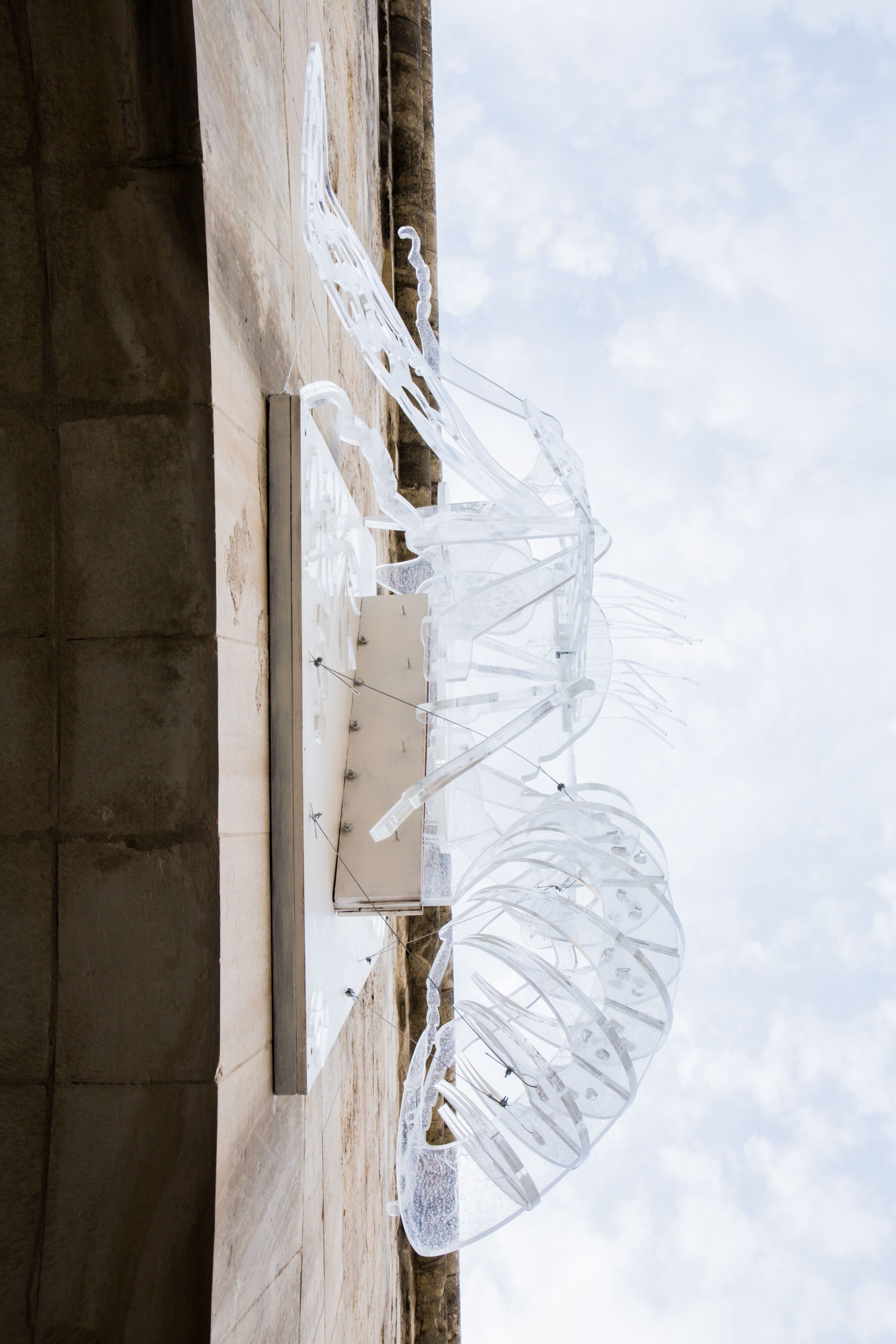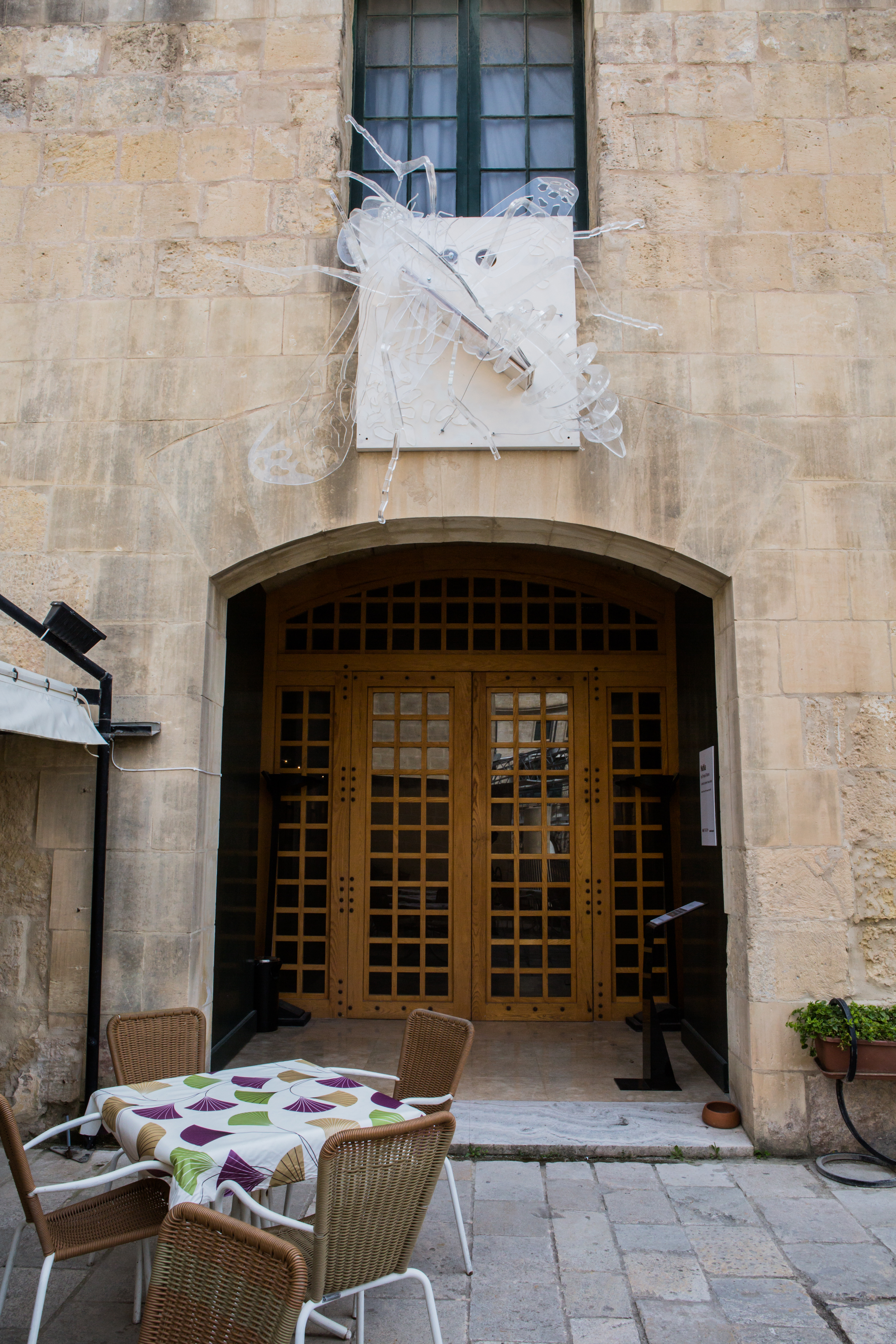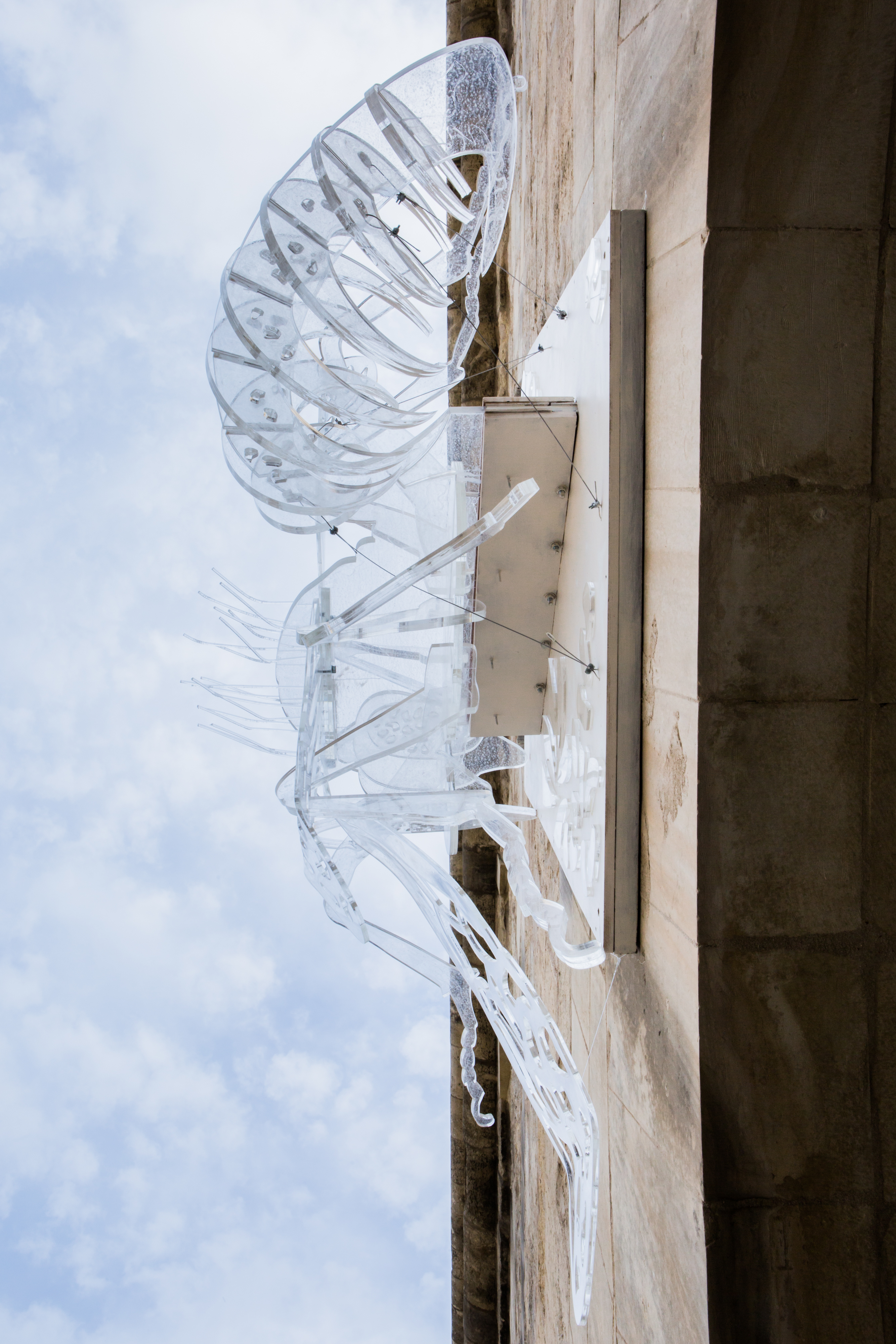Naħla (exhibition)
Naħla Naħla is a site-specific art installation based on the idea that the honey bee is an essential ancient dweller of the Maltese islands. Even the name Melitos or Melita, associated so closely with the country, is often believed to be derived from words relating to the islands as the land of honey. Aspects of bee culture permeate human culture, not only in the Maltese islands, but also throughout the world. Indeed, it is a widely held belief that the bee is the key to the human ecosystem and life on Earth, as we know it.
The installation consists of a giant bee sculpted in transparent plexiglass. The main aim of this work is to raise awareness about the central role of bee culture in human culture. For example, parts of the patterns on surviving stonework across the street on the former Royal Opera House, on closer inspection, resemble honeycomb structures. Such designs are common in other places too. The same goes, to a lesser extent, for the patterns on bee wings, which are also echoed in patterns in the stonework and elsewhere.
There is a parallelism going on between swarms of working bees greeted by a solitary guard bee in the hive to deposit nectar into the honeycombs and swarms of workers entering the city through City Gate each morning. This is how the bee, viewed from between the parliament buildings (the closest thing to a guard tower in the new City Gate area), will be presented each morning to the hundreds of workers entering the city.
The bee is prevalent in Maltese culture, evidenced by the fact that it is the honey bee that was selected to adorn the 3 mils coin between 1972 and 2006. Today the honey bee is an underrated Maltese icon, and the ultimate aim of such art installation is to raise some awareness about its former glory and grant it its well deserved share in public discourse. [1]
Curator: Norbert Francis Attard
Exhibition
- 15th April until 14th May 2017: Part of VIVA 2017 held in Spazju Kreattiv.
{{#if:Naħla exhibittion1.jpgNaħla exhibittion.jpgNaħla exhibittion2.jpg|
{{#if:|
{{{header}}}
}}{{#if:Naħla exhibittion1.jpg|
}}{{#if:Naħla exhibittion.jpg|
}}{{#if:Naħla exhibittion2.jpg|
}}{{#if:|
}}
}}{{#if:|
}}
}}{{#if:|
}}
}}{{#if:|
}}
}}{{#if:|
}}
}}{{#if:|
}}
}}{{#if:|
}}
}}{{#if:|
}}
}}
External links
References
| references-column-width
| references-column-count references-column-count-{{{1}}} }}
| {{#if:
| references-column-width }} }}" style="{{#if:
| {{#iferror: {{#ifexpr: 1 > 1 }}
| Template:Column-width
| column-count: {{{1}}}; -moz-column-count: {{{1}}}; -webkit-column-count: {{{1}}}; }}
| {{#if:
| Template:Column-width }} }}">


